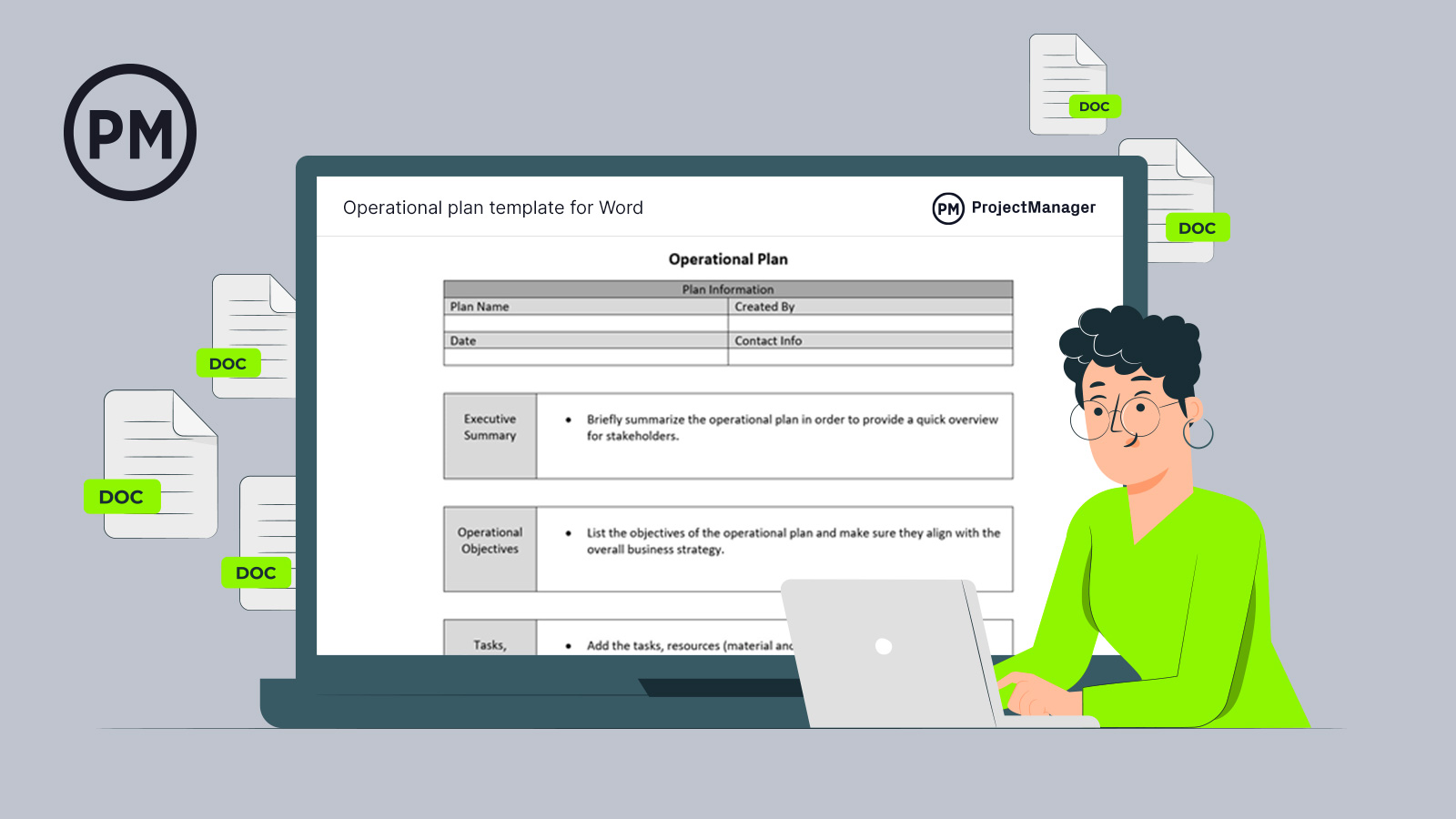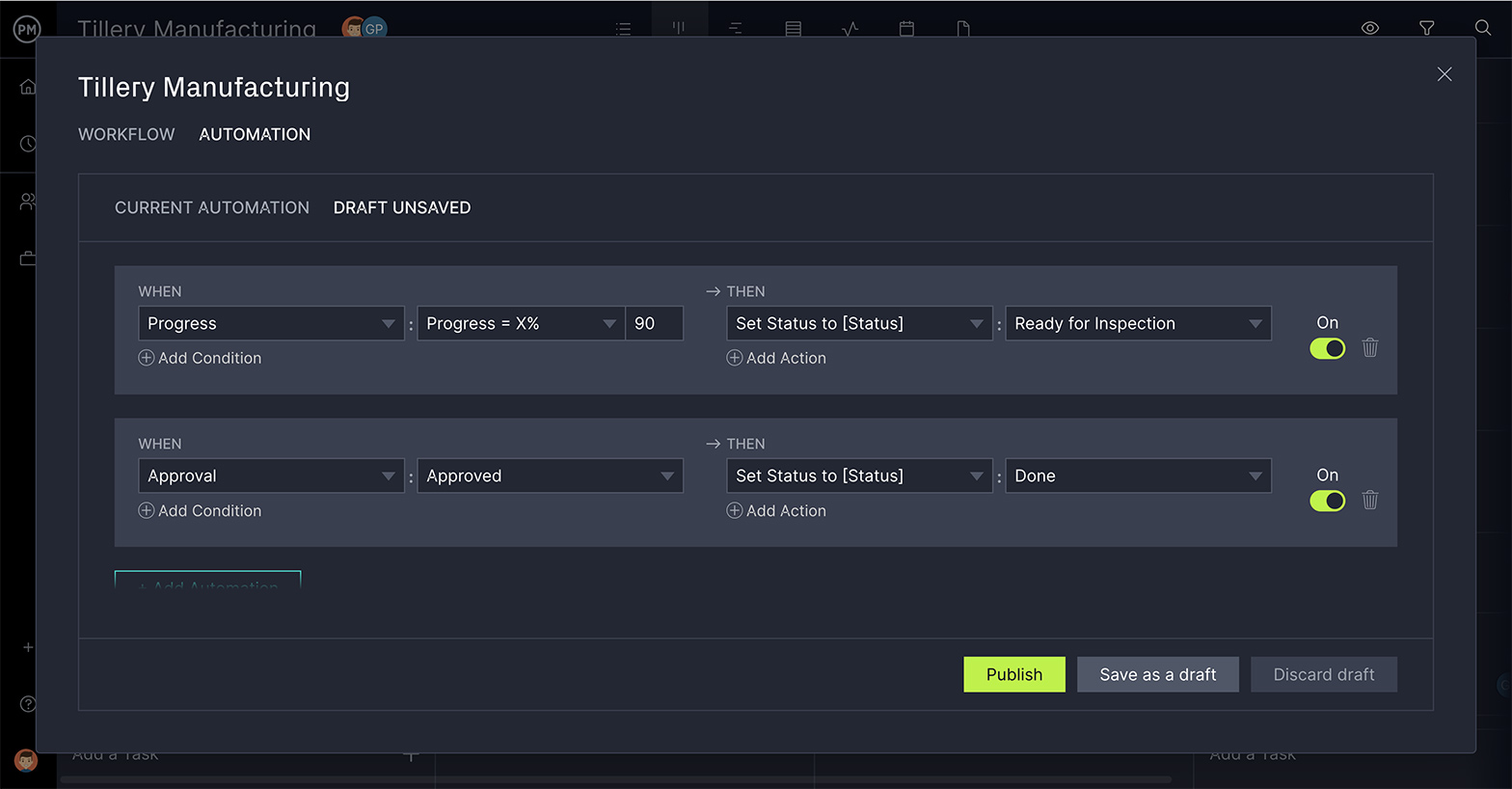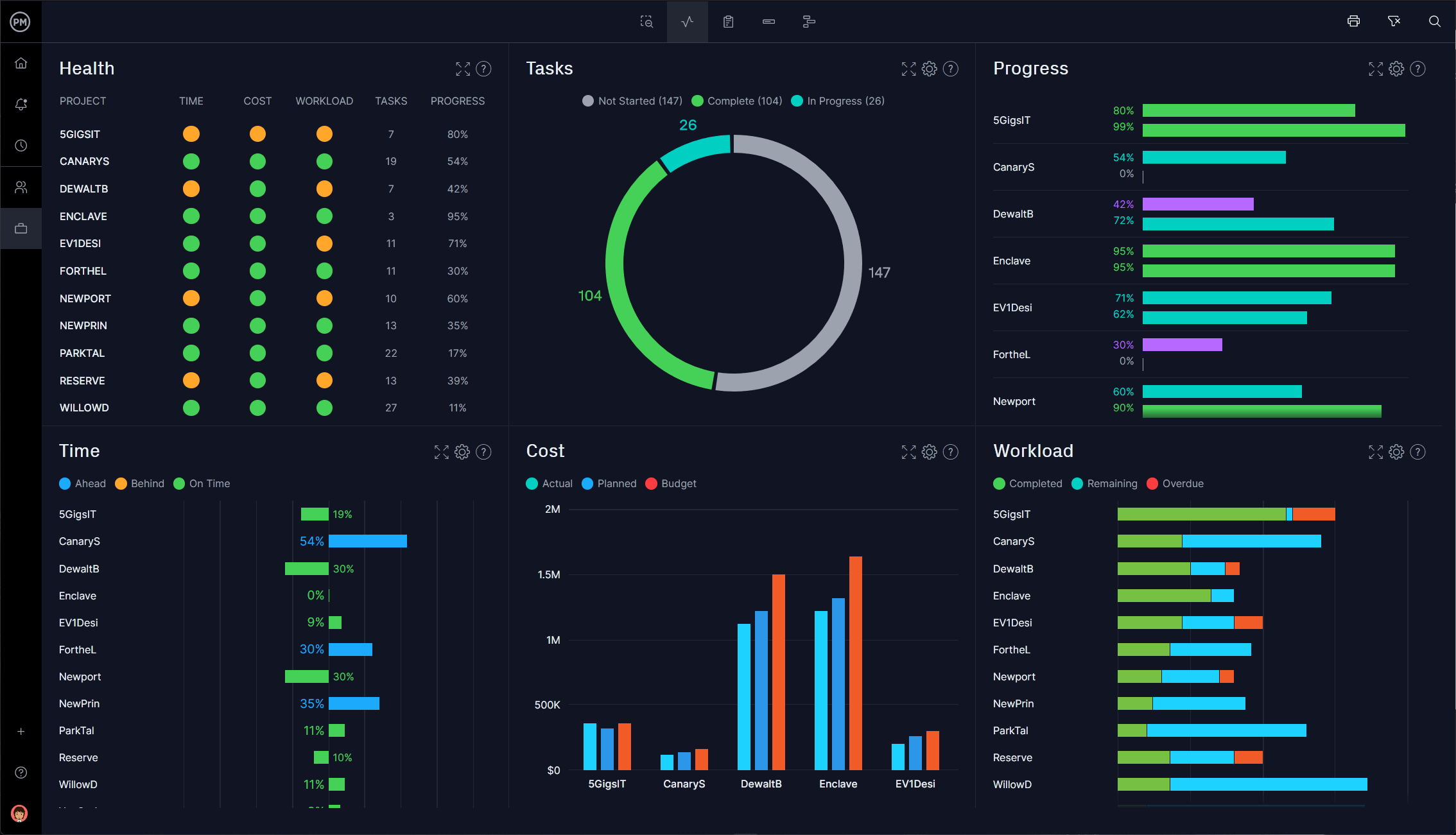Companies have goals and the goods or services they produce must align with those goals. Everything has to work together, including resources and processes, to help achieve those goals as efficiently as possible to stay in business. Having an operational strategy helps companies meet those larger goals when planning their projects.
But what is an operational strategy? We’ll get to that in a moment, as well as discuss the various types and how to create an operational plan. Companies always need to review and revise their operational strategy to stay competitive and on track to meet their company-wide goals.
What Is Operational Strategy?
Operational strategy is how an organization decides how it’ll produce and deliver its goods or services. Every step that leads to manufacturing and what happens after the product is manufactured is detailed. The decisions made for each step make up the operational strategy.
But this doesn’t make it separate from the overall business strategy. In fact, the operational strategy must conform to the larger business strategy. In other words, the operational strategy for manufacturing a product line will have goals that work in tandem with the company’s larger business strategy. Both must align for the company to remain competitive in the marketplace.

Get your free
Operational Plan Template
Use this free Operational Plan Template for Word to manage your projects better.
The operational strategy is made up of various smaller operations that feed into whatever the company is producing. Those operations might include such things as procurement of raw materials, working relationships with vendors and suppliers, design goals, manufacturing processes, packaging and delivery to name but a few.
That’s a lot of planning, monitoring and coordinating of production. To manage those workflows, you need project management software. ProjectManager is online project management software that helps you plan, manage and track your operations and keep them aligned with your operational strategy. Once you have an operational strategy, you need to create an operational plan on our interactive Gantt charts. Use it to organize your tasks, resources and costs on a timeline and filter for the critical path. Then set a baseline and track progress in real time. Get started with ProjectManager today for free.

Types of Operational Strategies
There isn’t a one-size-fits-all approach when it comes to operational strategies. There are many types of organizations that use operational strategies to boost efficiency, capabilities and stay competitive. Here are just a few types of operational strategies that organizations use.
Corporate Strategy
When a corporation is devising its strategy, it must look at itself as a larger system made up of interconnected departments. They’re like hubs and nodes that work together to achieve a shared goal. Corporations achieve this through company policies and guidelines that allocate resources to various departments with the objective of reaching the overall goal.
Customer-Driven Operational Strategy
As the name implies, this operational strategy is when an organization intends to meet its customers’ needs. To do this, the organization must identify trends in the marketplace and determine how customers are behaving in terms of their buying preferences and demographics. With this research, an organization can pivot to exploit these findings and see threats to the business and mitigate them more quickly. They can also leverage their strengths and be more competitive.
Core Competencies Strategy
This operational strategy focuses on an organization’s key strengths, resources and capabilities. By pinpointing and exploiting those strengths, an organization can increase its customer satisfaction and loyalty to its product, which can help expand its footprint in the market. But such an operational strategy can also improve efficiencies, such as production costs, which helps with profitability and can even attract new talent.
Competitive Priorities Strategy
When an organization wants to differentiate its brand, product or service, they focus on a marketing-based corporate strategy as well as production processes and organizational culture. In doing so, they’re more likely to produce products and services that meet the needs of their customers at an affordable price. Looking at operational expenses and product development times is essential. Features, quality and benefits that differentiate their product help them stand out.
Product or Service Development Strategy
If you’re looking to improve innovation, this is the operational strategy you’ll want to utilize. It helps add value to your product design. Consider designing a product or service to exploit a niche in the market. You can also use your team and technology to provide customers with a wider range of products and services that they can’t find in the marketplace, such as free overnight delivery.
Cost-Driven Strategies
This operational strategy is based on price. It’s ideal for customers only looking at the bottom line when purchasing a product or service. Usually, these products have many competitors and little difference between their products. Therefore, a lower price is going to attract buyers. To lower your prices, look at production processes and other cost-effective methods.
Outsourcing Strategy
As the name suggests, this is for organizations that rely on others to produce their products and services or deliver them to customers. An outsourcing strategy revolves around your vendors, quality control and logistics. You can take advantage of lower labor costs, use a supply chain management firm to oversee distribution, but always ensure the quality is meeting your expectations.
Flexibility Strategy
If your product or service has the flexibility to change quickly to respond to customer preferences, you’ll want to employ this operational strategy. This can help you if you’re able to do things such as have customers personalize their orders or have the flexibility to warehouse many or few products according to demand.

Creating an Operational Plan
Once you have an operational strategy, you’ll need an operational plan to implement it. An operational plan is a tool to ensure the projects and activities align with the goals and objectives of the organization.
The operational plan includes your goals and objectives, assigned tasks, timeline, budget and resources. This helps you manage your resources, monitor the financial health of the organization, guide your team and increase productivity.
To write an operational plan, follow these eight steps.
1. Know Your Operational Strategy
To begin, you need an operational strategy, which is more concerned with long-term goals than an operational plan that outlines the tasks that’ll help you to achieve those goals. Once you have an operational strategy, you can break it down into tasks to achieve its goals.
2. Set Goals and Objectives
The operational plan will ideally achieve the goals and objectives of your operational strategy. To make sure this happens, write down those goals and objectives to make sure they’re clear and everyone knows what they are.
3. Make a Budget
The budget funds the operational plan and allows managers to know what’s viable and what’s out of scope for the project. The budget is also instrumental in allocating the resources necessary to implement the operational plan.
4. Use Leading Indicators
By using leading indicators and predictive measurements, managers can forecast the outcomes of their operational plan. That informs the tasks and activities of the team and adds to the likelihood that they achieve favorable outcomes.
5. Communicate With the Team
Regular team meetings aid in the development of the operational plan. Team members will execute the plan and their insights prove valuable. It also keeps them updated on changes as the plan is developed, which helps them understand the overall plan and their role in it.
6. Use Reporting Tools
To make sure you’re keeping to the operational plan and that your team is accountable, you need reporting tools to track progress and performance. By monitoring a variety of project metrics, managers respond quickly if things are going off-track and get back on schedule without jeopardizing the project.
7. Keep Documentation
Document every step of your operational plan to track progress and measure improvements over time. This documentation also proves valuable when you’re working on a future operational plan, so be sure to archive it as well.
8. Review and Revise
An operational plan should be flexible. There will be challenges and changes over the course of its execution, so don’t look at the operational plan as written in stone. When there are changes, be sure to have regular meetings with your team to keep them updated.
Operations Plan Template
This operational planning template helps you list down the resources, budget, processes and risks that play a role in running your business operations.

Operational Planning vs. Strategic Planning
Operational planning and strategic planning are linked but different. A strategic plan outlines the necessary steps for an organization to achieve its goals and objectives. Operational plans are about the more short-term objectives of the organization.
Therefore, operational planning is updated annually, while strategic planning is used to guide an organization over a longer period of time. Also, the scope of a strategic plan is larger as it’s responding to the needs of the entire organization. Operational planning has a more limited scope, dealing mostly with a specific department or team.
Another difference is in who’s tasked with creating the plan. A strategic plan is usually under the purview of a top executive who’s dealing with the larger organization. Operational planning is led by mid-level managers and addresses the needs of their teams.
ProjectManager and Operational Planning
ProjectManager is online project management software that helps you plan, manage and track operational plans in real time. Plan and schedule resources and manage costs with our online Gantt chart that can be shared to keep everyone on the same page. Speaking of pages, all documentation is kept on our tool, which has unlimited file storage, so we’re also a central hub for all your operational planning documents.
Track Progress and Performance in Real Time
Your operational plan is supposed to support the larger operational strategy. To make sure it’s doing this, you need to monitor what your team is doing and if it’s tracking with the planned effort. Our real-time dashboard captures a high-level view of the progress and performance of the project across six metrics from time and cost to workload and more. Best of all, you don’t have to configure our dashboard as you do with other lightweight tools. Use our dashboard to track one project or your entire portfolio.

Automate Workflows and Boost Team Productivity
The operational strategy looks to improve efficiencies. Our automated workflow takes repetitive or simple tasks off your team’s desk to let them focus on more important tasks. You set the triggers that put into action such things on the task as changing the status, tags, assignee and more. To ensure quality, there are task approval settings that let only authorized team members allow the work to move forward.

Our software helps you turn your operational strategy into an operational plan that will deliver on your organization’s goals and objectives. Use our collaborative platform to keep everyone working better together, sharing files and commenting at the task level. You’re always working on the most current data no matter which project view you choose, from Gantt charts to kanban boards, calendars and lists.
Related Operations Management Content
- Operational Planning: How to Make an Operations Plan
- Using Operational Excellence to Be More Productive
- Operations Management: Key Functions, Roles and Skills
- Operational Efficiency: A Quick Guide
ProjectManager is award-winning software that helps you manage your operational plans. Our real-time data helps managers make better decisions and connects teams to collaborate and increase their productivity. Get started with ProjectManager today for free.


